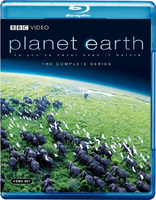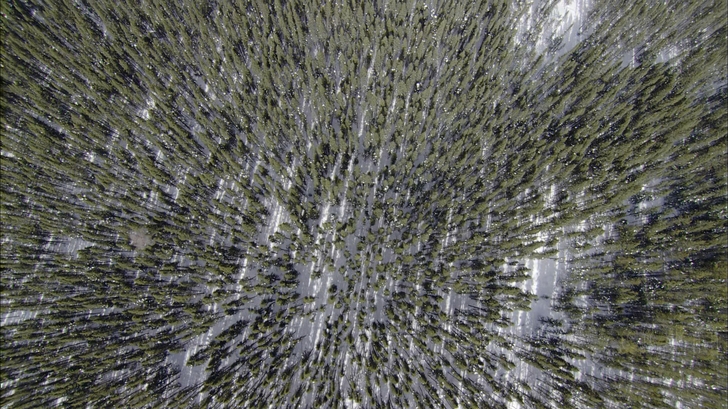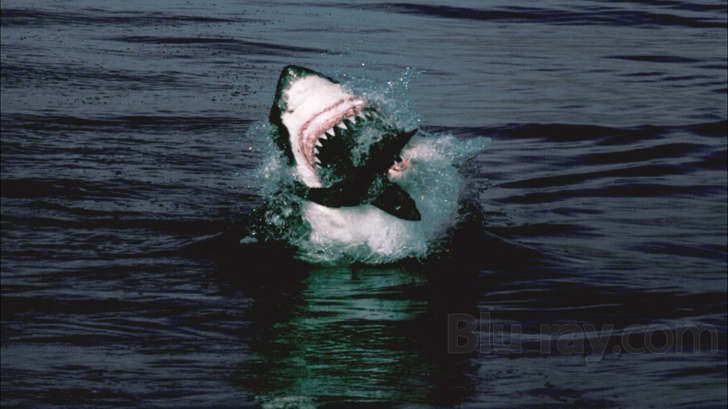Planet Earth Blu-ray Movie
HomePlanet Earth Blu-ray Movie 
The Complete SeriesBBC | 2006 | 550 min | Rated TV-PG | Apr 24, 2007

Movie rating
8.9 | / 10 |
Blu-ray rating
| Users | 4.4 | |
| Reviewer | 4.5 | |
| Overall | 4.4 |
Overview
Planet Earth (2006)
With an unprecedented production budget of $25 million, and from the makers of Blue Planet: Seas of Life, comes the epic story of life on Earth. Five years in production, over 2,000 days in the field, using 40 cameramen filming across 200 locations, shot entirely in high definition, this is the ultimate portrait of our planet. A stunning television experience that captures rare action, impossible locations and intimate moments with our planet's best-loved, wildest and most elusive creatures. From the highest mountains to the deepest rivers, this blockbuster series takes you on an unforgettable journey through the daily struggle for survival in Earth's most extreme habitats. Planet Earth takes you to places you have never seen before, to experience sights and sounds you may never experience anywhere else.
Narrator: David Attenborough, Nikolay Drozdov, Thomas Anguti JohnstonDirector: Alastair Fothergill, Mark Linfield
| Documentary | Uncertain |
| Nature | Uncertain |
Specifications
Video
Video codec: VC-1
Video resolution: 1080i
Aspect ratio: 1.78:1
Original aspect ratio: 1.78:1
Audio
English: Dolby Digital 5.1
Subtitles
English SDH, French, Spanish
Discs
25GB Blu-ray Disc
Four-disc set (4 BDs)
Playback
Region free
Review
Rating summary
| Movie | 4.5 | |
| Video | 4.5 | |
| Audio | 3.0 | |
| Extras | 0.0 | |
| Overall | 4.5 |
Planet Earth Blu-ray Movie Review
Covering all continents, climates and habitats, the acclaimed nature series brings fantastic camerawork to Blu-ray.
Reviewed by Greg Maltz January 22, 2008A baby elephant is separated from its mother in an arid stretch of the African plains. The baby's form, in remarkable definition and clarity, marches slowly as the camera pulls back. And back. And back. Until the elephant is just a spot in the middle of a vast, lifeless stretch of land. This spectacular feat of camerawork is just one example of the dramatic shots in BBC's remarkable nature series, Planet Earth. Using helicopter-mounted stabilization technology, the documentary's camera crew worked for five years to capture Earth's most hidden and awe-inspiring views and bring them into our living rooms. Their work culminated in this documentary, now available as a complete collection on Blu-ray. Each one-hour episode includes breathtaking scenes of landscapes, animals and naural phenomena that leave you awed and amazed.

This review covers the four-disc British BBC version of Planet Earth, narrated by Sir David Attenborough as released in the U.S. A slightly different edition of this BD set is offered in the U.K., with an additional fifth disc of supplements. To make matters more confusing, the U.S. broadcast version, narrated by Sigourney Weaver, is also available. They are easily distinguishable by looking at the back cover of the slipcase. The BBC U.K. version reviewed here is neatly produced on four BDs. With the exception of the first episode--a sampler of memorable scenes throughout the series--each episode focuses on a unique habitat removed from human reach. Disc one includes three episodes: From Pole to Pole, Mountains, and Fresh Water; disc 2 includes Caves, Deserts, and Ice Worlds; disc three features Great Plains, Jungles, and Shallow Seas; and the final BD includes Seasonal Forests and Ocean Deep. With dozens of gifted naturalist photographers combing the planet to produce this footage, it is little wonder that Planet Earth boasts remarkable scope and stunning visuals. The narrative is not quite as strong, but maintains the viewer's interest and is delivered by Attenborough who is a renown naturalist in his own right.
Those who watched the series in HD on the Discovery Channel have an incentive to watch it again, as the Blu-ray includes 90 minutes not shown in the broadcast version. While some episodes are more fascinating than others and there is variability in how informative they are, the collection is uniformly excellent in visuals and Attenborough's trademark delivery. If you like documentaries and nature, this BD set is essential. From the rarest creatures in the depths of our oceans to the largest bird migrations in our skies, Planet Earth reminds us that we have yet to discover most of the creatures and places that make the Earth unique. In doing so, it delivers important perspective on our planet and on life itself. We humans sure get wrapped up in our own pursuits and this documentary is an excellent way to step outside our familiar routines and see our planet anew.
Planet Earth Blu-ray Movie, Video Quality 

The technical merits of Planet Earth's picture are impressive. Featuring the VC-1 codec at 1080p
and a 1.78:1 aspect ratio, the contrast, black level and definition approximate reference quality.
No pixellation or digital artifacts are observed. The only reasonable criticisms have to do with dark
scenes that obviously aren't resolved as clearly as daytime footage. That is to be expected, but a
flaw has been observed. The dark areas show a very subtle strobing effect. For this reason, Planet
Earth does not earn a perfect video rating, even though the strobing effect is almost
imperceptible and not visible to most viewers.
The most notable feature of the documentary is its striking aerial footage. Many of the
documentary's landscapes are best viewed from the air and so the camera crews take to the skies
for bird's eye views. Nowhere is this exemplified better than in the "Mountains" episode with its
rock steady footage of the Andes and Himalayas. The solid picture is stunning even compared to
other documentaries like Blue Planet, which features mind-blowing views, but a
noisy picture that trembles in many scenes.
So why doesn't the picture tremble in Planet Earth? After all, much of the footage comes from
helicopters and cameras battered by wind, using incredible zoom magnifications sensitive to the
slightest movement and vibration. The camera crews use an advanced stabilization technology
called Cineflex. It involves floating the lens and a sensor inside a gyro-stabilized, immobile ball.
The Cineflex bubble is impervious to movement, no matter what motion comes from the
helicopter or the wind. To deliver the best possible picture, much of the documentary uses a
$90,000 high-definition camera with a telephoto lens capable of 84 times magnification. But
resolution and zoom strength mean little if the camera is unstable and subject to airborne
vibrations, and that is why the Cineflex technology is so important. It allows us to enjoy the most
dramatic views and most exotic creatures on the planet with a depth and definition that is lifelike
and vivid.
Planet Earth Blu-ray Movie, Audio Quality 

The most prominent audio is the voice of David Attenborough and the somewhat shelved
orchestral score. Only occasionally are the sounds of the animals captured and included in the
mix. With a low-resolution audio track, one is left wondering how much better the sound
definition could have been. Frankly, Attenborough's voice sounds crisp and detailed, and the
strings sound warm and palpable, though not gorgeously defined. The rear channels may as well
never have been used and therefore, audio is the greatest room for improvement in the
development of future documentaries.
One scene in particular reveals much about the audible merits of Planet Earth, when
Attenborough is filmed in a tropical rainforest during the evening in the episode entitled
"Jungles". The audio engineering isn't bad, but having recently returned from treking
in the Guatemalan
rainforest, I realize that the documentary is incapable of resolving the complex cacaphony of
creature's
calls, cries, croacking, clicking, creaking, cackling, and chirping. In Guatemala, I heard the sounds
of a unique
species of frog that is not unlike the revving engines of cars at the Indy 500. Intermingled with
all
manner of insects and
nocturnal creatures in an orgy of feeding and sexual activity the "live performance" is far beyond
what I should expect from a documentary on Blu-ray. And yet I have heard content that comes
close. Warner will need to do far better
than low-resolution, Dolby Digital mixes if it expects to deliver lifelike audio that convinces
audiences they're hearing the real thing. While we can't expect perfect recordings and encodings,
hopefully higher aspirations are within reach, now that
Warner's days of dumbing down HD content to produce both HD DVD and Blu-ray are nearing an
end. Starting in May, Warner will be able to stretch out and fully utilize BD's 50 GB capacity
without worrying about exceeding HD DVD's 30 GB limit. This may mean lossless PCM
audio tracks.
But Planet Earth's sound quality is much better than other documentaries, like Blue
Planet. The mix of the latter was all over the map, with various sounds mixed in
gimmicky manner to the rear speakers when they did not belong there. Thankfully, Attenborough
remains anchored in the center channel and the minimal use of surrounds is actually very
tasteful for this kind of documentary. The real showcase is the picture, and that is rightfully
allowed to take center stage with no distractions in the soundstage.
Planet Earth Blu-ray Movie, Special Features and Extras 

Although the Blu-ray version of Planet Earth includes 90 minutes not shown in the broadcast version, no supplementary or "making of" material is included. It would have been nice, but 11 hours of viewing material is enough to wade through. I'm not sure I would have been in the mood to watch bonus features beyond the excellent footage provided.
Planet Earth Blu-ray Movie, Overall Score and Recommendation 

From the deepest cave to the highest summit, across the oceans and the ice of the polar regions, into the jungles and deep underwater, Planet Earth takes you places that you will likely never go. But who needs to go, thanks to the impeccable camera work and 1080p presentation of the Blu-ray set. Obviously, what puts Planet Earth in a class of its own is the camerawork and the picture. While not the most educational documentary, it offers many new places to see and animals to meet. And Attenborough is a world-class host, with an authoritative delivery and relaxed style--the perfect guide to take you places you've never been. Very highly recommended.
Other editions
Planet Earth: Other Seasons

Planet Earth
US Discovery Channel Edition
2006

Planet Earth
The Complete Series | Limited Edition
2006

Planet Earth
The Complete Series | Special Edition
2006
Similar titles
Similar titles you might also like

Life
BBC / Narrated by David Attenborough
2009

Planet Earth II 4K
2016

Human Planet: The Complete Series
BBC
2011

Galápagos
2006

Earth: The Biography
2007

Ganges
2007

Frozen Planet
The Original UK Series
2011

Nature's Most Amazing Events
2009

Wild Pacific
2008

Wild China
2008

HOME
2009

Earth: One Amazing Day 4K
2017

Grand Canyon Adventure: River at Risk 3D
IMAX 3D
2008

Blue Planet II 4K
2017

Wonders of the Solar System
2010

Blue Planet
Double Feature with The Dream is Alive
1990

Under the Sea
IMAX
2009

Earth
Disneynature
2007

Seven Worlds, One Planet 4K
2019

The Universe: The Complete Season Seven
Ancient Mysteries Solved
2013